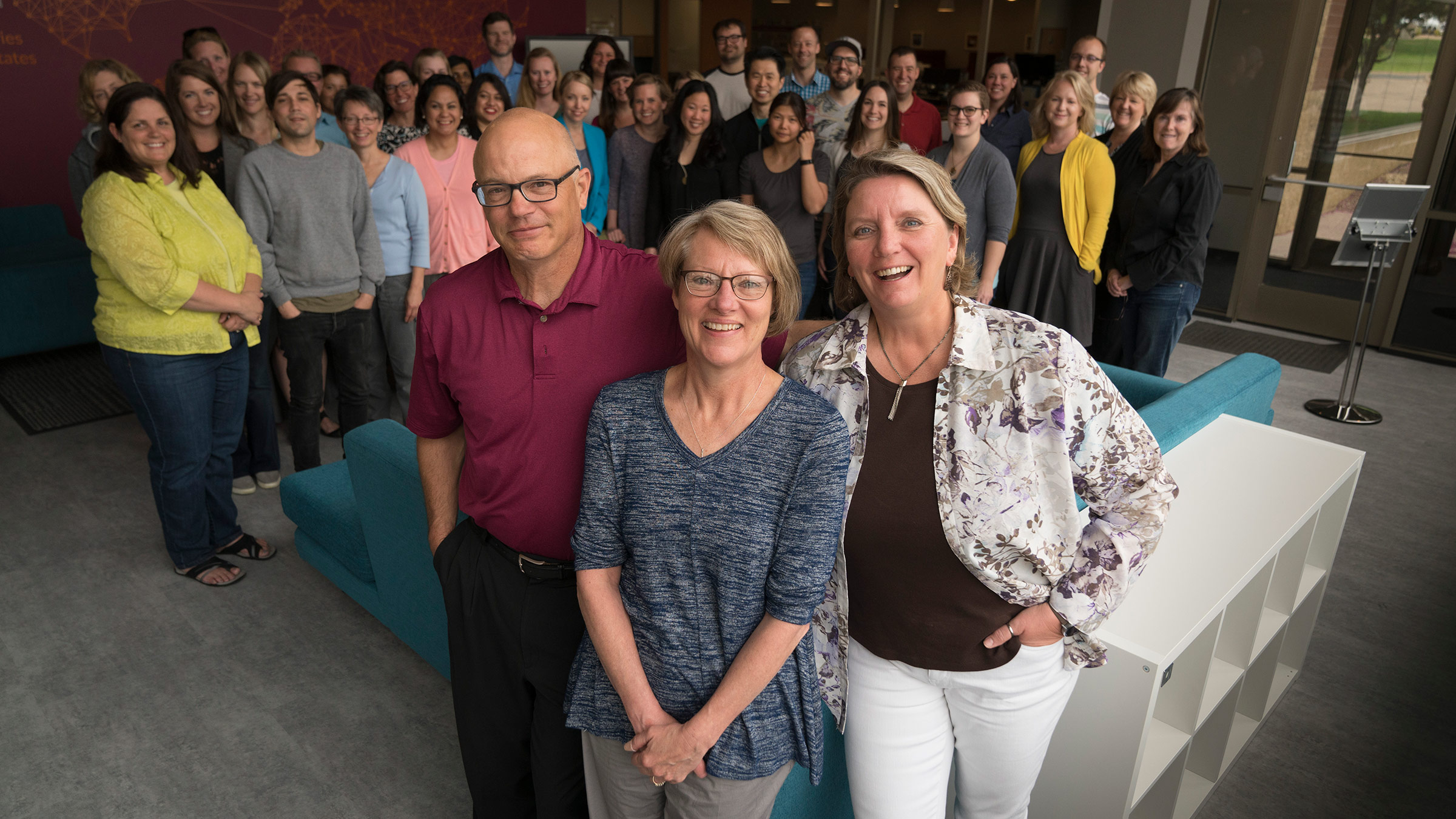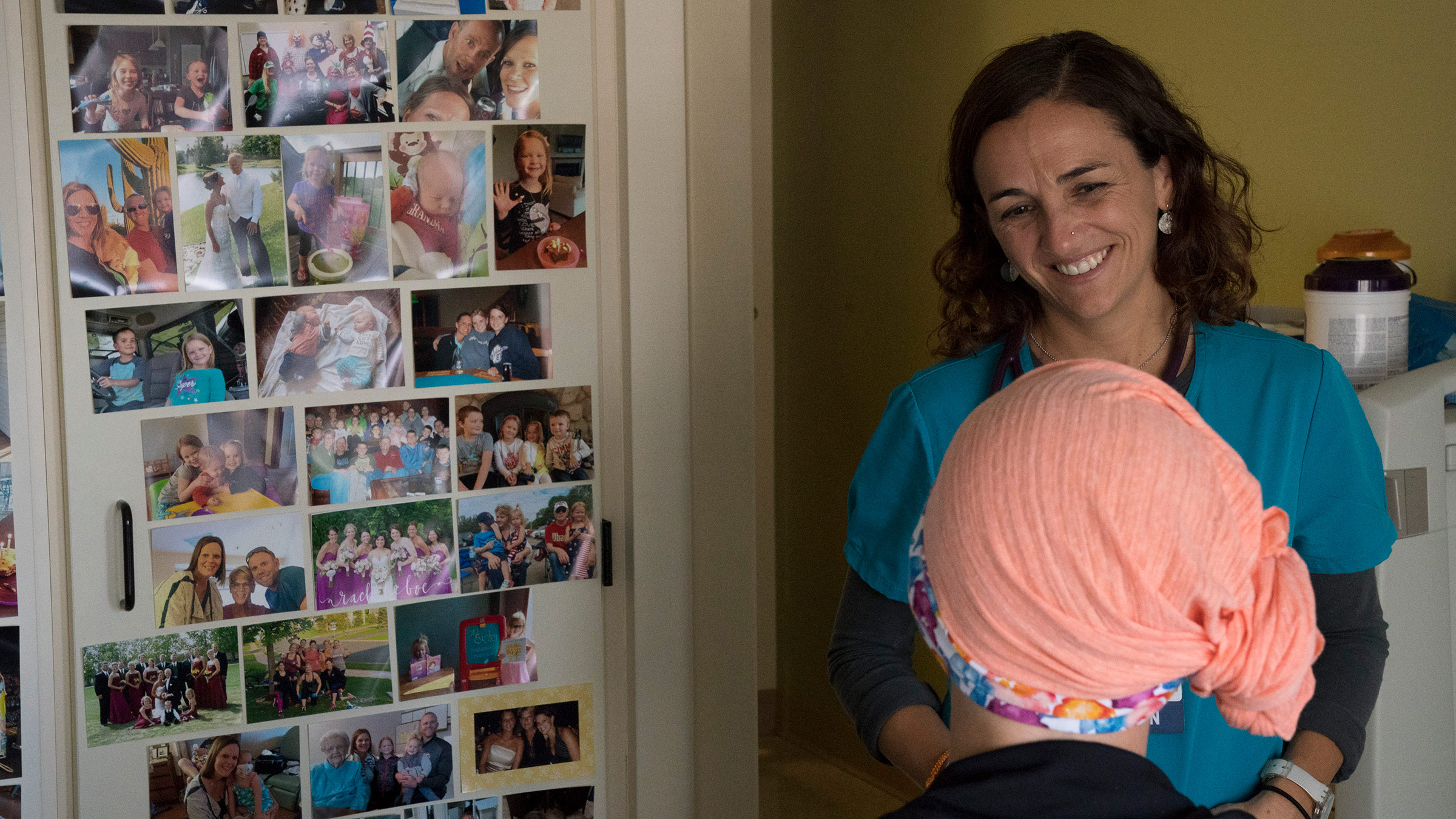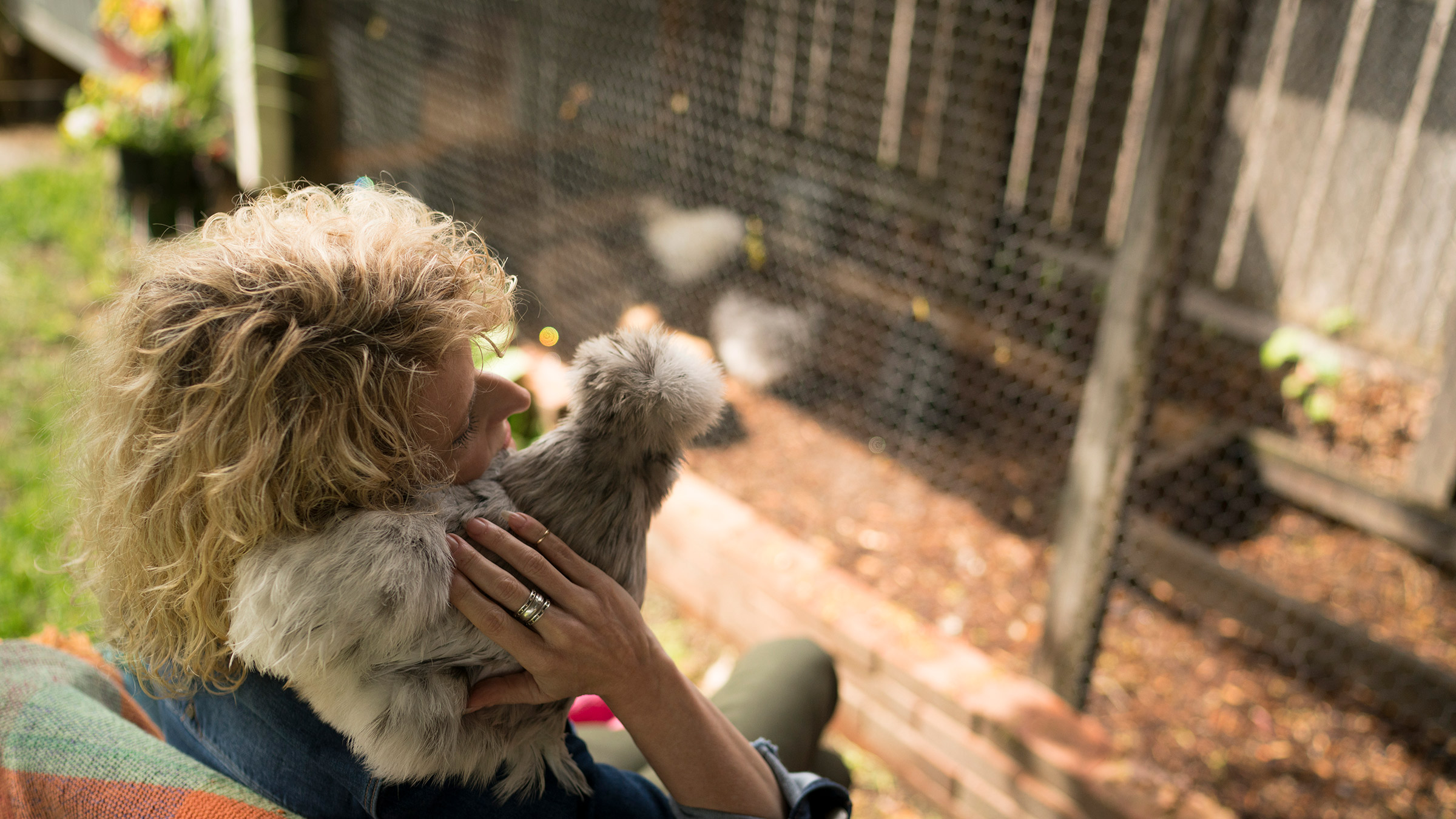Watch or read on the topic of healing.
How We Heal: A New Series With the simple hope of helping others, ordinary people plunged into serious health crises talk about what has made them whole again, even in the face of trauma, suffering and loss. While every approach is different, one universal truth emerges: Healing is a choice.
Exploring the Topic of Healing
Patricia McMorrow

Baby Brighid, delivered at 26 weeks and 1 pound, lived for just 9 days. On what would have been her 20th birthday, June 7, 2017, Brighid’s Mom, JoAnn Hardegger, of Somerset, WI, said, “You don’t ever fully heal from the loss of a child. But our daughter has a legacy.”
With an eye toward honoring the next 20 years of Baby Brighid’s legacy, the CaringBridge team has set out on a journey with National Geographic photographer and documentary filmmaker David McLain, to distill the wisdom of healing from good and decent people with the ultimate credentials.

The CaringBridge team with founder Sona Mehring, right, and JoAnn Hardegger and Darrin Swanson, parents of Baby Brighid, for whom CaringBridge is named.
To begin what we expect to become an ongoing series of conversations on healing, we invited CaringBridge users across the country, many of whom have run the gauntlet, to reflect on the most terrible times in their lives. Less to revisit what happened—so often agonizing, frightening and hideously unfair—and more to draw out what has happened since.And with the simple hope of helping others, these amazing people opened their hearts, and homes, to describe how they have gone about making themselves whole again.
What they have endured is not pretty. But their stories are beautiful.
To emphasize: It is neither their intent, nor ours, to tell people how to heal, or even why they should try, especially when health can’t be restored. And we know, too, that for some people, healing may always be elusive, or unattainable.
It is our intent, though, to continue exploring, in episodic fashion, the simple and complex topic of how we heal.
For this first episode, we visited with 20 CaringBridge families across the nation. Some face complicated, uncertain or terminal diagnoses. Others are living a Bible verse quoted by many CaringBridge authors: “Struck down, but not destroyed,” (2 Corinthians, 4:8-9).
All of these ordinary souls are establishing a new normal, when all they want is the old normal back. If one thing became abundantly clear, everywhere we went, it was this: People have chosen to heal.
What we observed, though, should be viewed in this context: The choice to heal is made easily by some, and is much harder for others. And for some people, healing may never advance beyond a possibility.

Meritxell Mondejar Pont with a young mom being treated for cancer in the same hospital where Meritxell’s husband, Spiro, was a patient.
We also observed that health and healing are distinct. So often mentioned in the same breath, in real life the two can exist together, separately or not at all. Here’s what people had to say:Health: Absence of illness, disease, injury, either from the start, or as a result of cure and/or healing; being whole.
“Health is a noun. Healing is a verb.” (Dr. Archelle Georgiou of Minneapolis, storyteller, former healthcare industry executive and author of Healthcare Choices, a book on medical decision-making.)
Healing: Becoming whole again, even when cure or restored health are not an outcome; deciding to move ahead with what remains; broken, but repaired.
“You learn that through something so tragic and sad, you have actually grown and changed in a way that makes you better and stronger than you were before.” (Claire Schwab of Alexandria, VA, whose young son, Teddy, was gravely injured in a car accident.)
“I hope for a cure, and for a long life, but my main focus is on finding wholeness in each moment.” (Michael Bischoff of Minneapolis, 23 months after his diagnosis of glioblastoma multiforme, an aggressive brain cancer.)
From what we observed, a decision to heal exists in parallel, or sometimes perpendicular, to prognosis. Translation: Hard to explain; easy to see.
We also saw that healing looks different for everyone. A glimpse of the pure and powerful stories we captured:
- A young widow changed careers to become an oncology nurse after losing her husband to cancer.
- Driving country roads in his pride-and-joy Chevy pickup helped heal a young man who suffered a “heart attack of the mind” and attempted to take his life.
- During treatment for breast cancer, a 24-year-old woman sat at the piano in the church where she works and played her heart out, late at night, with only God as her audience.
- Dressing to the nines, complete with gorgeous gloves to protect fingers damaged by disease, makes a woman living with two serious illnesses feel un-sick. She said, “People think sick people should look sick, but that’s not my style.”
- A Gulf War veteran takes target practice against the cancer that upended his life.
- So that her only son, who died too young, will not be forgotten, a mom used her yearly income tax refund to do random acts of kindness for strangers.
Why? Academic experts, who seldom agree on much, describe the science of healing as elusive, at best.
At the outset, we asked for help from Mary Jo Kreitzer, PhD, RN, and director of the Center for Spirituality & Healing at the University of Minnesota.
In response to our request to be pointed toward “the best science in healing,” she replied: “This answer may frustrate you or delight you. There is no universal definition of healing.”

Tanya with Atilla the Hen, one of the therapy chickens-in-residence at Tanya’s home.
More frustrated than delighted, we kept asking around. With a respectful nod to Dr. Kreitzer, our findings can best be described as a Rubik’s Cube. Among the highlights:Dr. Annie Brewster and Jonathan Adler, PhD, of the Boston-based, nonprofit Health Story Collaborative, introduced us to scholarship around narrative identity (telling stories to help make sense of our experiences) and post-traumatic growth (faced with traumatic events, including a health crisis, people can actually grow and thrive in response). These represent layers of healing.
- Tanya Bailey, a Minnesota therapist and doctoral student who has recently been through a cancer journey, is deeply exploring research on how interaction with registered therapy animals advances healing.
- Some research advances particular models of healing, such as the “Whole Health Cairn,” a wellness model based on scientific findings, by Dr. Lissa Rankin, author of Mind Over Medicine.
- Sheryl Sandberg’s Option B has lately focused scientific mindshare on the concept of “resilience,” which also represents a dimension of healing.
- But a noted academic, Jeff Levin, PhD, who came to us by way of Dr. Kreitzer offers hope that healing, much like “happiness,” “resilience” and “spirituality,” may eventually be defined precisely enough so we can measure the magic.
In it, Levin writes: “The issue of healing is too important, clinically and scientifically, to be left to sketchy and emotion-driven conceptual engagement (or non-engagement) which inhibits the rigorous empirical research that this subject very, very richly deserves and requires.”
We couldn’t agree more. And in future segments of this conversation, we would love to share more of the science that exists, and to participate in helping the world arrive at an agreed-upon, and measurable, definition of healing.
But for now, we invite you to look into the eyes of these women, men and children surviving things you wouldn’t wish on your worst enemy.
What they truly want is for you to never walk their path. But if you do, may health and healing be yours. And if fate decides otherwise, may some good somehow emerge from bad.
These amazing people believe—and we do, too—that the choice to heal is always in your power.
Read More
Our mission is to amplify the love, hope & compassion in the world, making each health journey easier.
Join us here...
Never miss an update from your close friends and family by adding
Caringbridge@c.caringbridge.org to your contacts list
Copyright © 1997-2018 CaringBridge, a nonprofit organization.









No comments:
Post a Comment